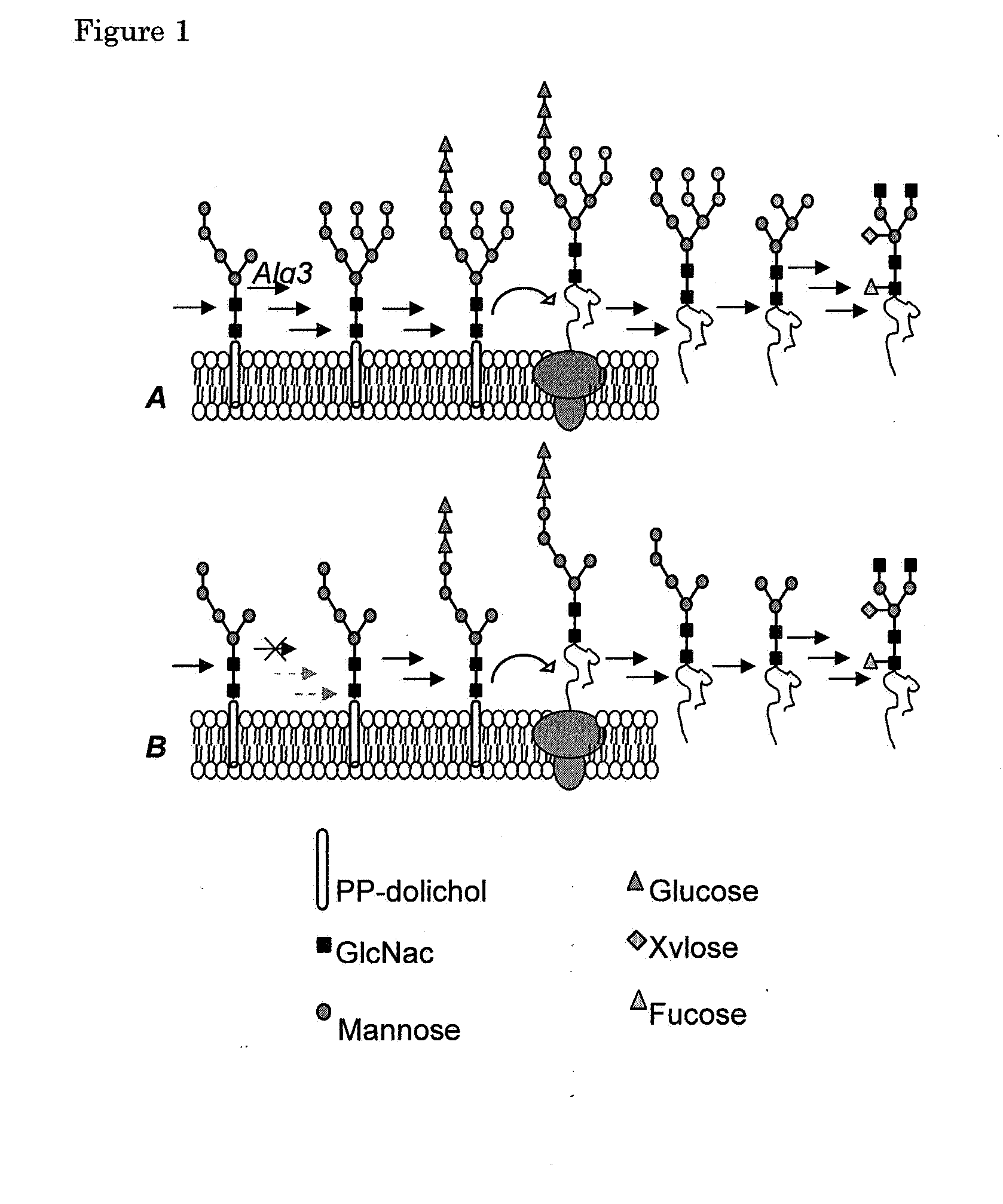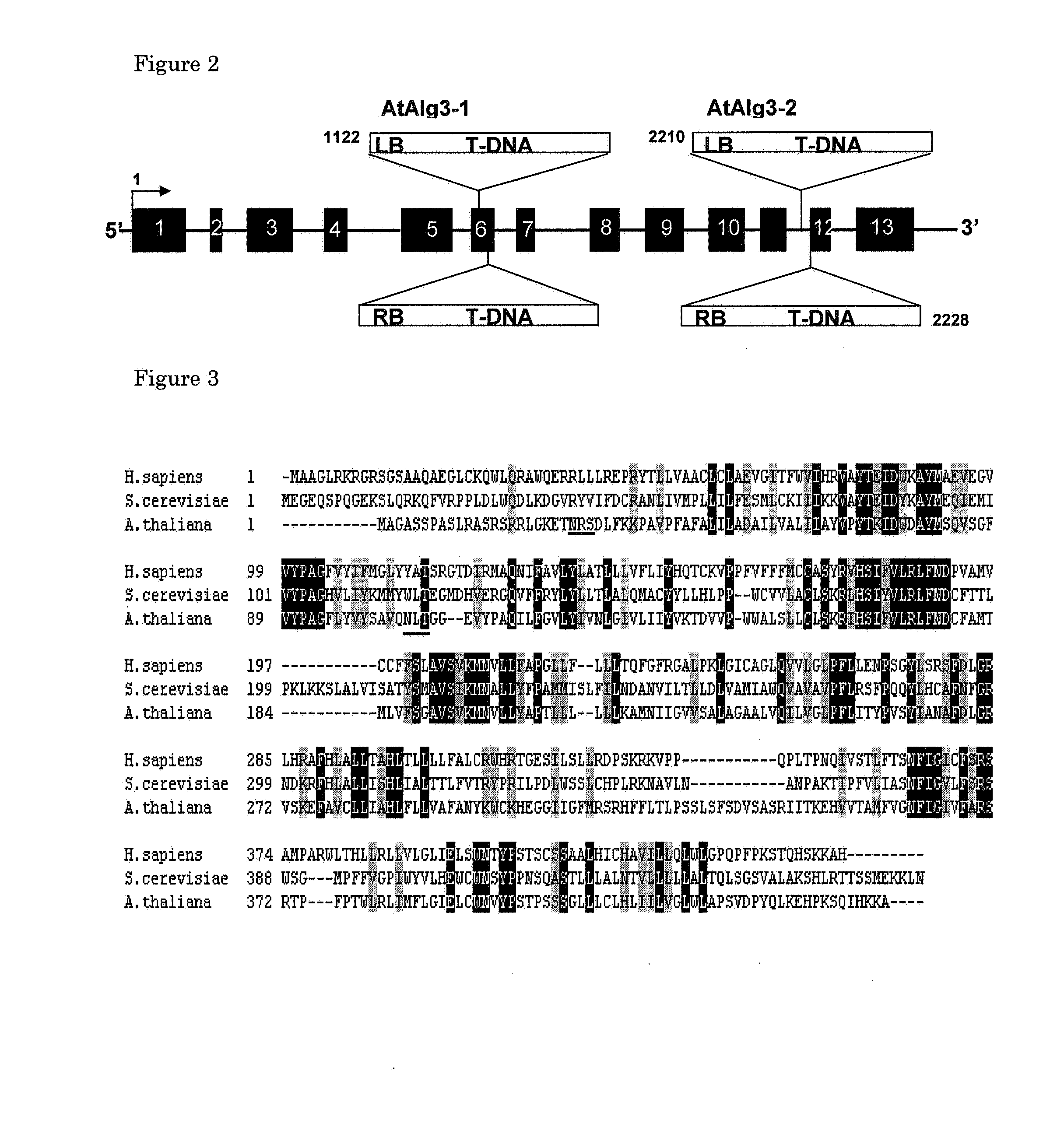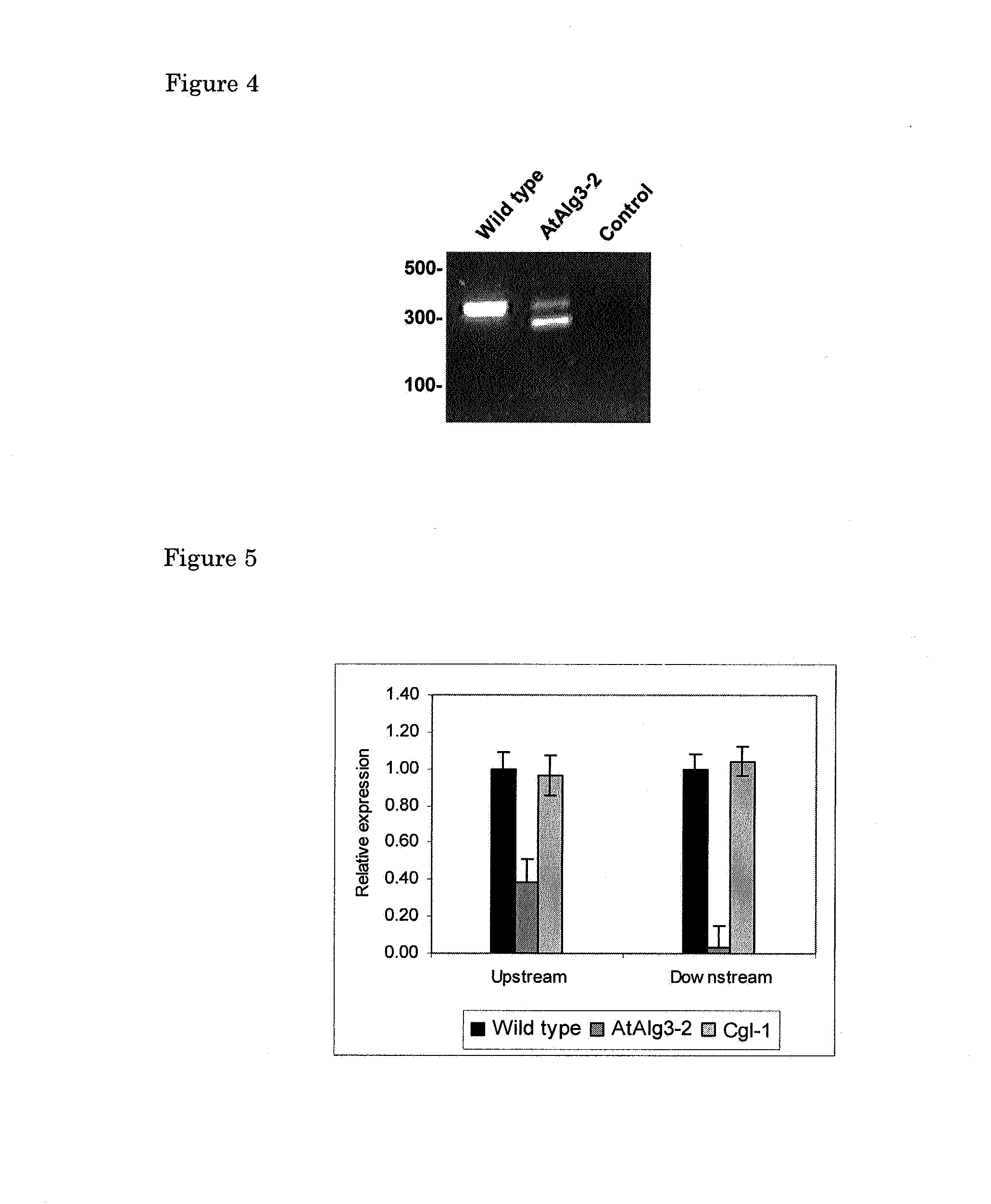Alg3 mutant
a technology of alg3 and mutant, applied in the field of alg3 mutant, can solve the problems of reducing the homogeneity of glycoprotein products and the relationship between glycoprotein production in plants, and achieve the effect of modifying glycosylation
- Summary
- Abstract
- Description
- Claims
- Application Information
AI Technical Summary
Benefits of technology
Problems solved by technology
Method used
Image
Examples
example 1
Reducing High Mannose Glycoproteins in Arabidopsis
Plant Materials and Growth Conditions
[0061]Seeds of Arabidopsis thaliana Columbia-0 (Arabidopsis) and T-DNA insertion lines were sown on 9 cm 0.8% daishun agar Petri dishes and placed in a cold room at 4° C. for 2 days in the dark to promote uniform germination. Germination and plant culture were performed in a climate chamber (20° C. / 15° C. day / night temperatures; 250 μmol light m−2 s−1 at plant level during 12 h / d and 75% relative humidity).
[0062]Isolation of Genomic DNA
[0063]Plant material was collected in eppendorf tubes and ground with a pestle in liquid nitrogen and 400 μl DNA isolation buffer (5 M Urea, 0.3 M NaCl, 50 mM Tris pH 7.5, 20 mM EDTA, 2% N-Lauroyl sarcosine, 0.5% Sodium Dodecyl Sulfate (SDS), 5% phenol pH 8.0 (0.1% 8-hydroxyquinolin)) and 400 μl Phenol:chloroform:isoamylalcohol solution (1:1:0.02). The supernatant containing the DNA was precipitated with isopropanol and washed twice in 70% ethanol. The DNA was diss...
example 2
Silencing of Nicotiana tabacum alg3 Gene
[0079]pCASintron:
[0080]A DNA fragment comprising a Arabidopsis thaliana ubiquitin-10 intron (SEQ UBQ10) will be amplified using PCR with primers 5′-GTGACGAGCTCGTAAATTTCTGTGTTCCTTATTCTCTC-3′ and 5′-GTGACAAGCTTCTGTTAATCAGAAAAACTCAGATTAATC-3′ from A. thaliana genomic DNA. The resulting fragment will be digested with Sac I and Hin dIII and cloned into likewise digested pCASesp. pCASesp is a pUC19 derivative in which the Hin dIII and Eco RI sites flanking the multiple cloning site have been used to insert the sequence SEQ CASesp at the same time removing these two sites and the Eco 31I-site in the backbone. Thus, vector pCASintron will arise.
p CASalginv:
[0081]A cDNA fragment comprising part of the tobacco alg3 gene (SEQ NtALG3) will be amplified using RT-PCR with primers (5′-GTGACCATGGATGCTTATATGTCTCAGGTTAC-3′ and 5′-GTGACGAGCTCAGAAGTGGATGAAAACACGACC-3′) from cDNA prepared from N. tabacum cv Samsun total leaf RNA. The resulting fragment will then b...
example 3
Production of Monoclonal Antibody in Alg3 Tobacco Plant or Cell Culture
[0083]In a preferred embodiment a transgenic Alg3-plant (Nicotiana tabacum, Oryza sativa, other) as described herein, can be used for the production of a glycoprotein, preferably a recombinant glycoprotein such as but not limited to a monoclonal antibody. For the production of a monoclonal antibody such as MGR48 (NCBI entry AY311598 for light chain and AY311599 for heavy chain sequence) in such a plant, the resulting alg3-plant such as the tobacco alg3-plant described in Example 2 needs to be transformed with a gene construct comprising an expression cassette comprising the MGR48 light and heavy chain coding sequences with appropriate controlling elements such as promoter and terminator sequences as described (Elbers et al., 2001; Plant Physiol. 2001 (126):1314-1322) or otherwise as known by those skilled in the art. Resulting transgenic plants can be analysed for the expression of the monoclonal antibody as desc...
PUM
| Property | Measurement | Unit |
|---|---|---|
| pH | aaaaa | aaaaa |
| pH | aaaaa | aaaaa |
| pH | aaaaa | aaaaa |
Abstract
Description
Claims
Application Information
 Login to View More
Login to View More - R&D
- Intellectual Property
- Life Sciences
- Materials
- Tech Scout
- Unparalleled Data Quality
- Higher Quality Content
- 60% Fewer Hallucinations
Browse by: Latest US Patents, China's latest patents, Technical Efficacy Thesaurus, Application Domain, Technology Topic, Popular Technical Reports.
© 2025 PatSnap. All rights reserved.Legal|Privacy policy|Modern Slavery Act Transparency Statement|Sitemap|About US| Contact US: help@patsnap.com



